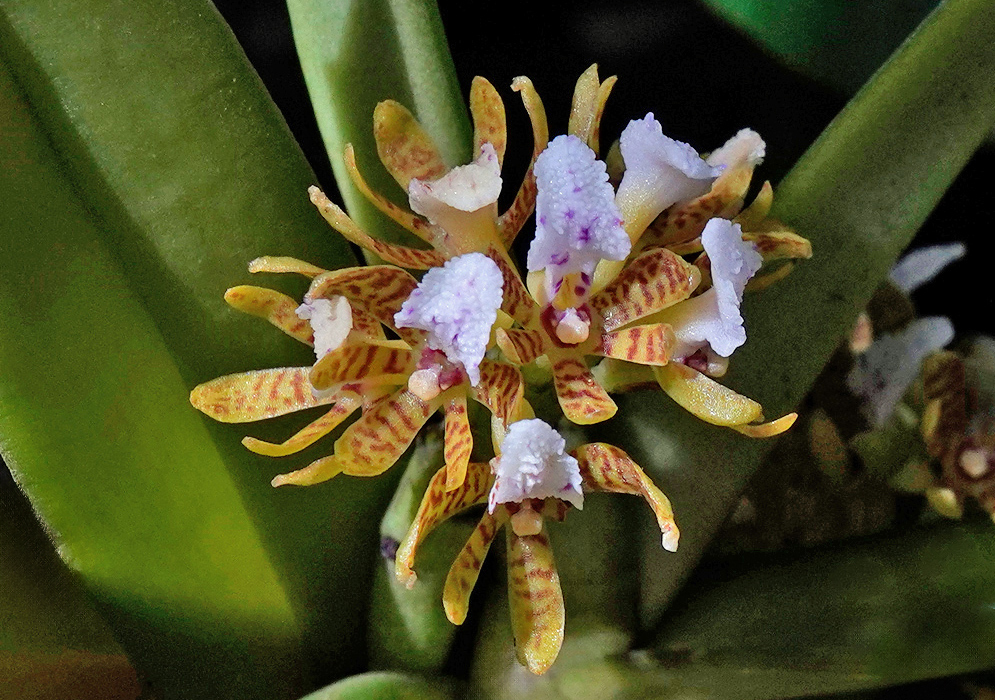This post has 11 Simple Fields-fields attached. Show fields.

Native to a broad region stretching from Sri Lanka and India through Southeast Asia to parts of southern China and the Philippines, Acampe papillosa is a robust epiphytic orchid that thrives in warm, humid lowland and montane forests, often anchoring itself to tree trunks or large branches at elevations from sea level up to around 5,000 feet. Each flower measures approximately 0.5 to 1 inch across and features thick yellow-green petals and sepals marked with reddish-brown stripes, while the lip is pale violet to white and prominently textured with a papillose (wart-like) surface, giving the species its name. These flowers grow in compact racemes and emit a strong, sweet fragrance, especially noticeable during the early morning hours. The plant is considered slow-growing but long-lived, and its tough, leathery leaves and dense root system make it particularly resilient in exposed or dry conditions, including urban settings. In traditional Indian medicine, the root paste has been used topically to treat rheumatic conditions, and other plant parts have been employed in Ayurvedic and Unani systems for fever and inflammation, though such uses are limited and not broadly validated in modern clinical studies. Photographed in Florida.

